Yates Account
Join now
Create a Yates account today!
Sign up to join the Yates Garden Club for monthly e-mails packed with seasonal inspiration, tips for success & exclusive promotions.
Plus if you’re a Garden Club member you can take part in the Yates Growing Community - a blog to share successes, get advice & win prizes in fun challenges along the way!

Forgot password
Enter the email address associated with your account, and we'll email you a new password.
Spring continues to be all about fabulous flowers; sowing flower seeds and planting perennials, to fill garden beds and pots with eye-catching colour over summer.

Sensational Sunflowers
Sunflowers are the blooms that we most associate with summer. And they’re so easy to grow from seed! They make a great school holiday seed-sowing project for kids, too. Kids will be sure to vote for the extra tall (up to 5m!) Sunflower Ginormous FlowerZilla with its classic, sun-facing, large yellow heads.
It's easy to grow sunflowers in a garden, just choose a spot in the garden that receives full sun and is sheltered from strong winds. Prepare the planting area well by digging in Yates Dynamic Lifter Organic Plant Food. Sow seeds directly where they are to grow and cover with soil. Firm down and water well, and keep the soil moist until they have germinated.
Once seedlings are approximately 5 cm, it's a good idea to mulch with an organic mulch, like bark chips, woodchip or pea straw. When flower buds start to form, feed the sunflowers with Yates Thrive Rose & Flower Granular Plant Food.
TIP: For an added boost, apply Yates Thrive Roses & Flowers Liquid Plant Food.

Grow a Butterfly Field
The sight of colourful butterflies fluttering around the garden is pure delight. Not only do they bring a smile to your face, they can also help pollinate some types of flowers.
It’s important for gardeners to grow a variety of plants that flower throughout the year, so butterflies are attracted into the garden and provided with a source of food.
Yates Butterfly Field Beneficial Insect Mix is a blend of 33 colourful pollen and nectar rich flowers to attract butterflies and beneficial insects into the garden and provide them with pollen and nectar over a long period. It will also provide food for caterpillars, helping to nurture the butterfly life cycle.
The mix contains butterfly attracting and beautiful flowers like cosmos, marigold, sunflower, zinnia and California poppy. This mix also includes Swan plants and Asclepias, to make it especially attractive to Monarch butterflies. Yates® Butterfly Field will start flowering from around 10 weeks after sowing. Results will vary depending on the climate and time of year.
Yates® Butterfly Field is quick and easy to sow and grow. Find a sunny spot in a garden bed, enrich the soil with some Yates Dynamic Lifter Organic Plant Food, scatter the seed thinly over the soil surface and then rake in lightly, so the seed is around 3 mm deep. Firm down, water gently and keep moist while the seeds germinate, and seedlings establish.
To keep the plants looking tidy and prolong the flowering season, remove spent flower heads regularly. Otherwise leave them to mature and self-seed. Feed the flower patch every 1 – 2 weeks with Yates Thrive Flower Fruit Soluble Fertiliser, which is a complete plant food that’s boosted with additional flower-promoting potassium.
Every pack of Yates Butterfly Field Mix seeds helps to support the Monarch Butterfly New Zealand Trust, with their great work helping to locate, protect, enhance and create overwintering sites of the Monarch butterfly in New Zealand.
Butterfly hint: butterflies will enjoy a saucer of muddy water to drink from. Yes, muddy! The muddy water provides moisture, salts and minerals.

Pretty Petunias
Petunias are among the most widely grown summer flowers, both for their outstanding beauty and for their natural pest repellent properties. In fair warning, petunia germination can be a little challenging. The seeds must be exposed to some light but this, of course, makes them vulnerable to drying out. Lightly press the tiny seeds of Petunia Neptune Shades into the surface of some Yates Black Magic Seed Raising Mix. Keep the pot in a shaded spot and cover with plastic wrap or a sheet of glass. Avoid dislodging the tiny seeds by watering with a mister or by wetting from the base. After germination, transplant to larger pots and then into a sunny spot in the garden.

Cosmos Charm
It’s a great time to sow cosmos, to fill your summer garden with beautiful bee attracting flowers. Yates Cosmos 'Sensation' is our old favourite, with very pretty flowers in white, rose and crimson. Growing to almost a metre tall it has feathery foliage and makes a lovely backdrop in a garden bed.
We highly recommend Yates Cosmos 'Rubenza', which produces single blooms in a luxuriant deep burgundy when they first open, gradually fading to antique rose. Their elegant and unique colour palette makes for absolutely gorgeous cut flowers. They form medium-height plants, with profuse early blooms that flower continuously through summer.
Or for something completely different, Yates Cosmos 'Lemonade' has sophisticated yellow and white bicolour blooms. 'Lemonade' produces dreamy masses of flowers from early summer, with soft lemon petals shading to pale yellow, with a white central halo. They look stunning in a vase.
To promote lots of stunning cosmos flowers, feed plants each week with Yates Thrive Flower Fruit Soluble Fertiliser, which provides a complete and balanced diet of nutrients as well as being boosted with additional potassium to encourage flowering. Keep the soil moist and regularly trim spent flowers or cut them for a vase – cosmos make lovely cut flowers.

Divine Dahlia
Dahlias are the bold centrepiece flowers you need in your summer garden. They come in a gorgeous range of colours: whites, buttery cream, yellow and salmon through to bright pinks, rich reds and multi-toned flowers. It’s hard to believe a single species can have so many flower shapes! Classic bloom shapes include pompoms, anemones, cactus, singles and collarettes. Flowers can be petite, or grow to the size of a dinner plate! Dahlias can be grown from tubers and take around 2 months to flower.
Dahlias can also be grown from seed, like Yates Dahlia 'Cinderella', a compact dahlia that produces a long lasting display of bold and bright blooms. It’s ideal for massed garden colour, borders and pots and the plants can continue to perform for years.
Before planting dahlia tubers or sowing seed into a sun drenched spot in the garden, enrich the area first with some Yates Dynamic Lifter Organic Plant Food which will provide the new plants with gentle, slow release organic nutrients as they establish.
To promote lots of stunning dahlia flowers, feed plants each week with Yates Thrive Flower Fruit Soluble Fertiliser, which provides a complete and balanced diet of nutrients as well as being boosted with additional potassium to encourage flowering. Keep the soil moist and regularly trim spent flowers or cut them to take inside – they are absolutely gorgeous in a vase.
Pest control tip: aphids can be common on tender fresh new seedlings. Look out for tiny green, black, brown or grey insects hiding in amongst the leaves. A quick spray with Yates Rose Gun Spray Ready to use will easily control damaging aphids.


Dianthus Delights
Dianthus are a gorgeous family of flowers that bring cottage style, beautiful colour and fragrance to garden beds, borders and pots. Look out for these two delightful new dianthus from Living Fashion in your local garden centre:
-
Dianthus ‘Sugar Plum Coral’ (pictured left) has dark pink buds followed by very pretty coral to deep pink ruffled, perfumed flowers, held above clean blue grey foliage.
-
Dianthus ‘Pinball Wizard’ (pictured right) has highly fragrant, unique pink speckled double flowers that smother the plant during spring, on stems that are long enough to pick for a vase.
They’re small neat and compact plants that grow to around 30 cm tall and 40 cm wide and thrive in an airy spot in either full sun or part shade in both garden beds or pots. Dianthus create beautiful container displays, brightening up decks, patios and balconies in Spring. They’re also ideal border and edging plants, can be mass planted as a ground cover or used to fill small gaps in garden beds and perennial borders. They’ll do well in either full sun or part shade and will tolerate dry conditions once established, though appreciate a regular deep watering during dry conditions.
When planting a new dianthus in a garden bed, enrich the soil in the planting hole by mixing in some Yates Thrive Natural Blood Bone with Seaweed. It contains NZ seaweed to encourage root growth as well as being a natural source of organic slow release nutrients.
Every week during periods of foliage growth and flowering feed dianthus with Yates Thrive Roses Flowers Liquid Plant Food. It’s as easy as mixing 1-2 capfuls in a 9 L watering can and applying over and around the plant. Yates® Thrive® Roses & Flowers Liquid Plant Food includes nitrogen for healthy leaf growth and potassium, to encourage lots of beautiful flowers.
Maintenance is as simple as removing spent flower heads. Cut flower tip: to enjoy the maximum fragrance, pick the flowers when they’re almost fully open.
Dianthus information and images courtesy of www.livingfashion.co.nz
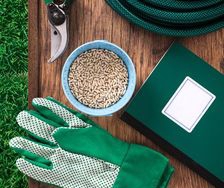
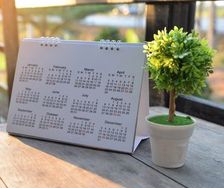
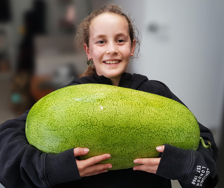
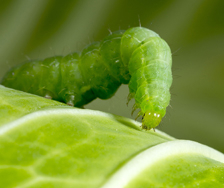
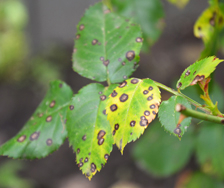
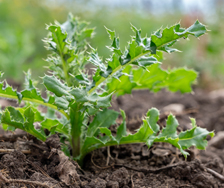











Share
Share this article on social media